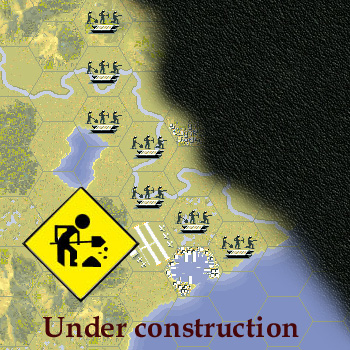 When you move the mouse pointer over the map, unit name, strength and coordinates are displayed as a label. When you press terrain button object name is displayed (city, river, sea, ...) |
Tulagi
7.8.1942 - 9.8.1942
PacPG: 7.8.1942 - 9.8.1942
Scenario Map:
|
|
|
Changes and corrections of map:
|
Scenario author: Scenario origin: Last revision date: |
stanny |
First release: Revision released: |
- - |
| A completely new scenario. The American landing on the island of Tulagi. |
Historic overview:
Article on English Wikipedia
| ||||||||||||||||||
Game play matters:
| Campaign play: This scenario is not part of any campaign, it can be run only as single. |
Scenario data:
|
Map size: 0 x 0 hexes 21 turns, 3 days per turn Version: PacAGPG 2, Starting side: Allies, Campaign: Single scenario, Order in campaign: 0. |
||||||||
|
||||||||
|
||||||||
|
||||||||
|
||||||||
|
Game time costingness of scenario: 27.37 % (product of units and turns numbers divided by difference between the most long and the most short scenario) |
||||||||
|
Number of Allied units: 48 units, from them are 0 core units and 48 auxiliary units 13 air units, 12 naval units and 23 ground units 0 of units are loaded to air transport and 21 to naval transport |
Transports Air/Naval: Allies - Axis 2/23 - 0/3 |
|||||||
|
Number of Axis units: 70 units 12 air units, 4 naval units and 54 ground units 0 of units are loaded to air transport and 2 to naval transport |
Initial prestige + every turn donation: Allies / Axis 500 + 0 / 640 + 70 |
|||||||
|
Max number of Allied units: 52 units, from them are 4 core units and 48 auxiliary units - on start of scenario is possible to purchase 4 unit (4 core + 0 auxiliary) |
||||||||
|
Max number of Axis units: 70 units - on start of scenario is possible to purchase 0 unit |
||||||||
Transport units:
|
||||||||
| Allied units: |
Axis units: |
The same time period scenarios:
| India (PacAGPG 2), New Guinea 42 (PacPG 1), Tulagi (PacAGPG 2) |
Battlefield map:

|
|